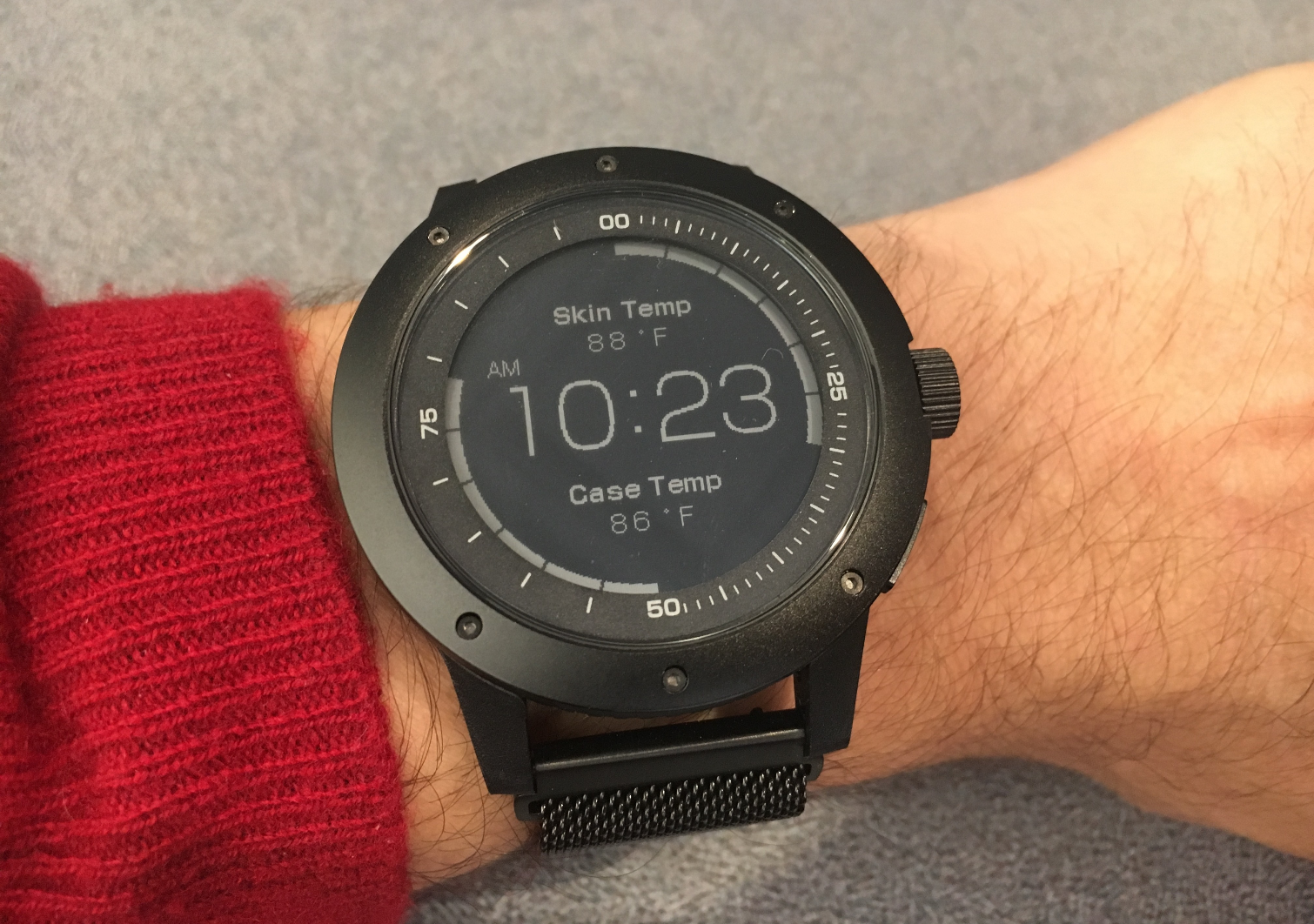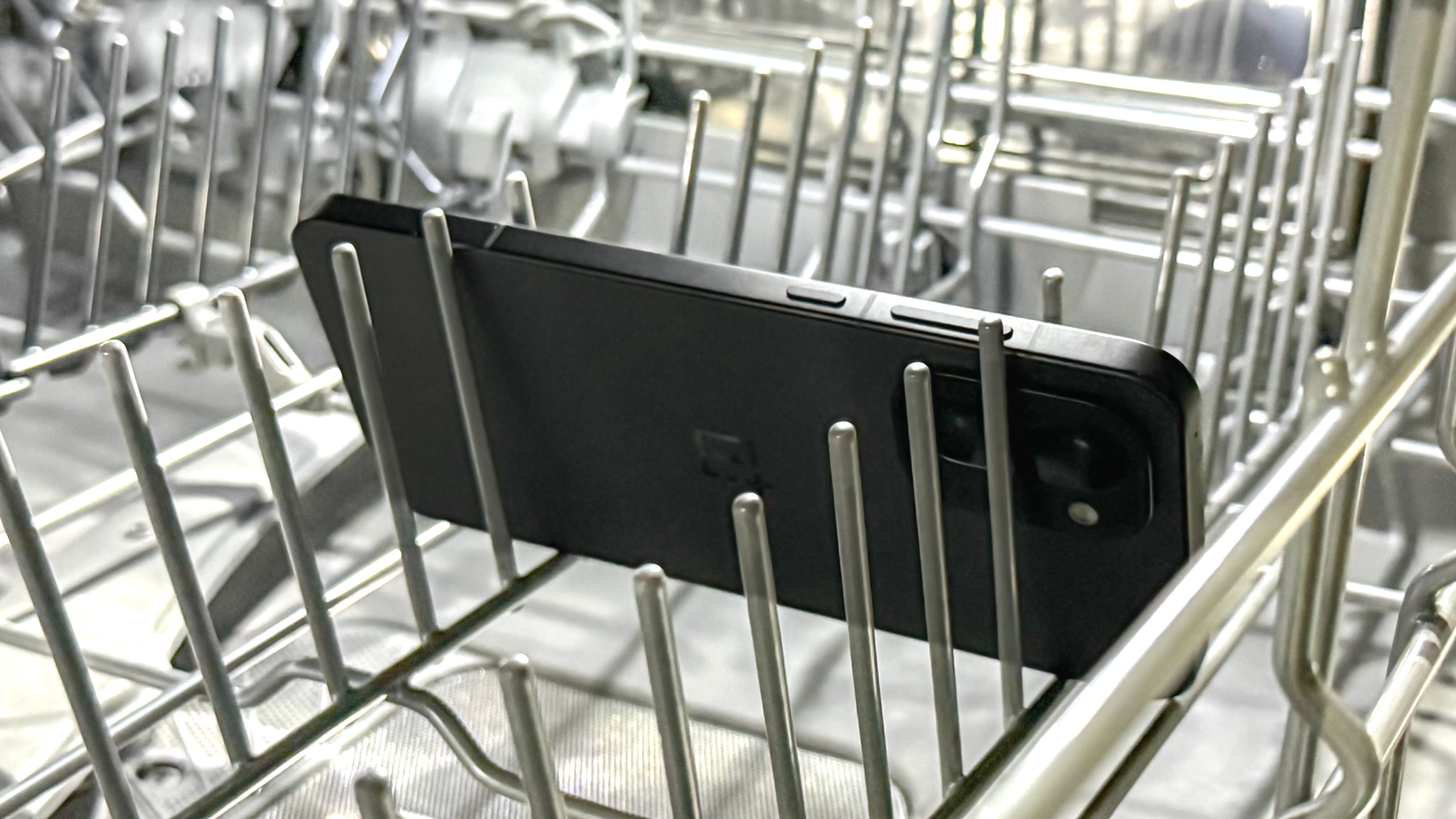Powerwatch Hands-On: Meet the Smartwatch That Never Needs Charging
This watch generates power using nothing but the heat from your wrist.
I think smartwatches hold a lot of promise, but there’s a reason why I rarely take one with me on a trip lasting more than a day. I either forget to bring along a charger, or don’t want to pack yet another gadget. That’s why the Matrix Powerwatch is so intriguing: It’s a watch that never needs charging. I wore this $199 watch for about a week, and, while its smartwatch features are rudimentary, the technology inside it could change not just smartwatches, but mobile devices as we know it.

Design
As smartwatches go, the Powerwatch is pretty basic. The screen is mostly black with white letters and numbers (no color here), and only has an accelerometer to measure your steps and track sleep. Although it pairs with your phone, there’s no notifications (the Powerwatch X, due out later this year, will have this feature), nor is there GPS, a heart rate monitor, or NFC.
With its 46 millimeter case, and nearly half-inch thickness, the Powerwatch is not meant for small wrists. The Powerwatch X is even larger: 50mm.
The Powerwatch has a decidedly industrial look. Screw holes line the outer rim, and grooves are cut into the case between its lugs. These are meant to help dissipate heat, so that the watch can generate electricity more efficiently. A digital crown is on the right, and is flanked by two buttons: The top switches between screens, and the bottom selects items.
It doesn’t just look tough: the Powerwatch is water resistant up to 165 feet, though it can’t track swimming.
MORE: Best Smartwatches
Get instant access to breaking news, the hottest reviews, great deals and helpful tips.
How It Works
The Powerwatch takes advantage of a property called the Seebeck Effect, a condition where differences in temperature between two materials creates electricity. Here, the watch uses a thermoelectric generator to harness the power created between the difference in temperature between your skin and the top of the watch case.
To be sure, this technology is in its early stages, and the Powerwatch only generates enough electricity to power a black and white screen and a fairly rudimentary step counter. You can forget about color LCDs, GPS, and LTE; they draw too much power.

Performance
Unlike every other smartwatch I’ve tested, there’s no battery meter on the Powerwatch: Instead, a Realtime Power meter shows how much energy you’re generating, by filling in white bars around the circumference of the screen. Turning the crown shows you the temperature of your skin and the temperature of the case. When you take the watch off, it goes into a sleep mode to conserve power.
The main screen shows the time and date; the Daily Activity screen shows how far you’ve walked, how many steps you’ve taken, and how many calories you’ve burned. Because it measures your skin temperature, Matrix claims that the Powerwatch can more accurately measure calories burned than other fitness trackers.
Running Mode shows your distance (as measured by the watch’s accelerometer) and elapsed time. After that, there’s a screen for a Stop Watch, and Settings. The watch also tracks sleep, but it’s far too bulky to wear comfortably while you’re sleeping.
Matrix plans to release an app (Android/iOS) for the Powerwatch that will let you customize its screens to an extent, and view your fitness stats on your phone.
Outlook
I wore the Powerwatch for nearly a week, and it was great never having to worry about charging it overnight. It just kept going and going, and I’m really interested to see how this technology develops as it becomes more efficient. Would I buy the Powerwatch? $199 is a lot to pay for a watch whose greatest attribute is that you never need to plug it in. For some, though, that may be enough.

Michael A. Prospero is the U.S. Editor-in-Chief for Tom’s Guide. He oversees all evergreen content and oversees the Homes, Smart Home, and Fitness/Wearables categories for the site. In his spare time, he also tests out the latest drones, electric scooters, and smart home gadgets, such as video doorbells. Before his tenure at Tom's Guide, he was the Reviews Editor for Laptop Magazine, a reporter at Fast Company, the Times of Trenton, and, many eons back, an intern at George magazine. He received his undergraduate degree from Boston College, where he worked on the campus newspaper The Heights, and then attended the Columbia University school of Journalism. When he’s not testing out the latest running watch, electric scooter, or skiing or training for a marathon, he’s probably using the latest sous vide machine, smoker, or pizza oven, to the delight — or chagrin — of his family.
